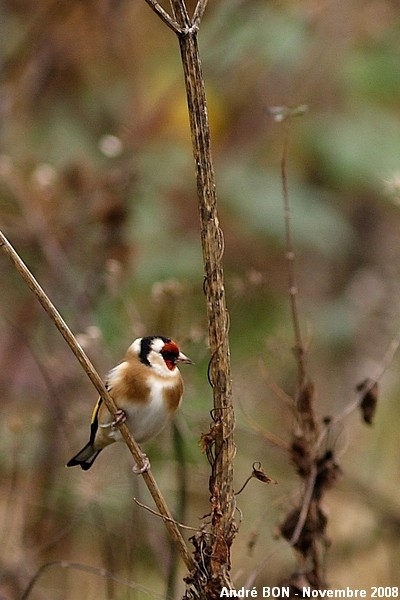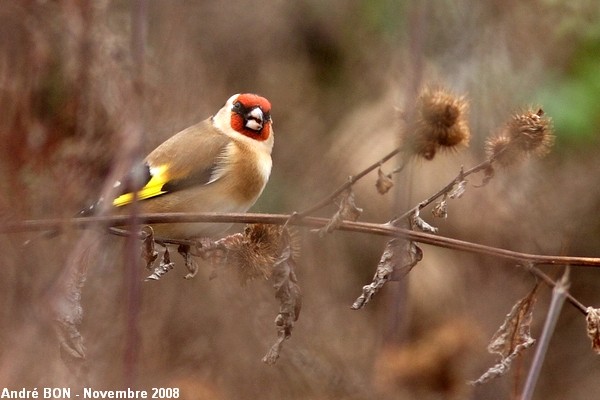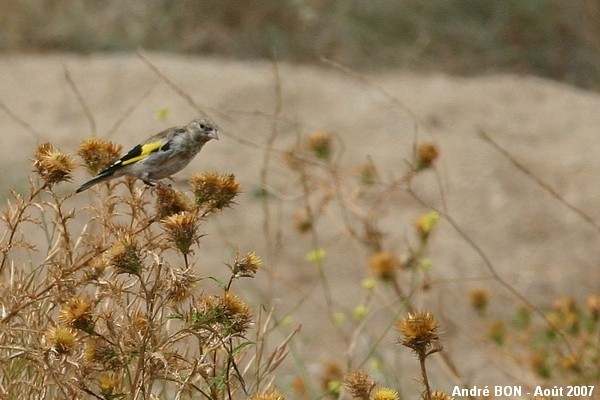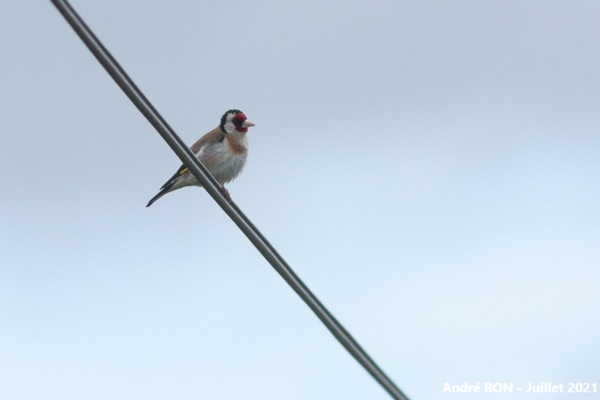




| European Goldfinch (Carduelis carduelis (Linnaeus, 1758)) |





|
|
Scientific name: Carduelis carduelis (Linnaeus, 1758) Common name: European Goldfinch French name: Chardonneret élégant Order: Passeriformes Family: Fringillidae Size: 12 to 14 cm; 14 to 18 g. Habitat: Cultivated areas, parks et gardens, especially where there are fruit trees. Fallow fields and roadsides in autumn to feed on thistles. Food: Small seeds especially thistle. The young birds are fed with insects. Nesting: The nest is built at the end of a branch or high inside hedgerows. It is a cup-shaped nest made up of woven grass, web thread and hair. There are 2 or three broods, of 4 to 5 eggs, per year. The male feeds the female when it lays on the eggs. Migration: Resident, northern birds move to the south in winter. Some local movements can be done to escape bad weather. Geographic area: Europe, North Africa, Middle East, Central and Western Asia. Goldfinches were also introduced in Australia and New Zealand. |
You can easily identify the European Goldfinch with its bright colours. The face is red. The cap, the top of the neck and the bill ring are black. The wings are bright yellow and black with white spots at the end. The back and the sides are brown, the breast is white. The tail is black and forked with a white tip. The strong bill is conical and sharp. |
| [To know more about the European Goldfinch] [Next picture] [Top] |

|
I have at least found one place where I can observe some flocks of European Goldfinches. I have still not succeeded in getting very close to take a close up picture. |
| [To know more about the European Goldfinch] [Next picture] [Previous picture] [Top] |

|
European Goldfinches are used to moving in flocks. Those I show on these pictures are in fact the last to fly away when I try to approach. |
| [To know more about the European Goldfinch] [Next picture] [Previous picture] [Top] |

|
The fact that there are European Goldfinches in this place must be due to the many thistles that are growing here and which are providing the seeds they feed on. |
| [To know more about the European Goldfinch] [Next picture] [Previous picture] [Top] |

|
Juveniles are missing the red marks on the head. |
| [To know more about the European Goldfinch] [Previous picture] [Top] |

|
The European Goldfinches that I observe here are quite discreet and often hide in the branches of the old pine. They are easiest to see when they perch on the telephone line wire. |